AN OVERVIEW OF UMTS AND WIMAX NETWORKS INTEGRATION
on
An Overview of UMTS …
N. M. A. E. D Wirastuti
AN OVERVIEW OF UMTS AND WIMAX NETWORKS INTEGRATION
N. M. A. E. D Wirastuti
Jurusan Teknik Elektro, Fakultas Teknik, Universitas Udayana, Kampus Bukit Jimbaran, Bali, 80361 Email: dewi.wirastuti@ee.unud.ac.id
Abstract
This paper gives an overview of the network integration of UMTS (Universal Mobile Telecommunication System) with WiMAX (Wordwide Interoperability of Microwave Access). A few proposed interworking solutions and seamless integration of both networks are explained. The best architecture and key procedures that will enable the integration both networks and handover mechanism for the seamless mobility are presented. Considering the trend of the current network evolution, which is the convergence between the telecommunications and broadcast worlds, an integration of mobile WiMAX with present 2G, 2.5G or 3G accesses into a homogeneous architecture goes a long way to achieve the reality of mobile broadband networks. With the advent of mobile WiMAX, a mobile broadband wireless access solution and based on all-IP (Internet Protocol) based OFDMA (Orthogonal Frequency Division Multiple Access) technology, an UMTS-WiMAX interworking approach can combine the merits of both technologies while eliminating their stand-alone defects.
Keywords: WiMAX, UMTS, OFDMA, handover, broadband
The cellular wireless industry is making its way to the next generation of mobile systems – the fourth generation (4G) on an all IP-based structure with a view of providing high speed data rates with high capacity, global roaming capabilities and support of several services and applications. Existing wireless technologies vary widely in terms of media access technologies, bandwidths, and security mechanisms. Therefore, combining these different current technologies to offer ubiquitous wireless access abilities with solutions that enable seamless mobility is very important [1]. With the on-going convergence evolution, integration and interoperability of mobile WiMAX and the existing UMTS access technology will be a huge step towards 4G migration providing the users with the “best connection” at any place and time [2].
There has been a fairly large number of relevant prior work and research in the area of integrating different diverse access technologies seamlessly into a common network platform. The proposed solutions consider varied aspects that affect seamless integration, such as intercellular handovers [3], and cross-layer designs in IP-based networks [4].
In this paper, a few proposed interworking solutions and seamless integration of both networks are overviewed. The best architecture and key procedures that will enable the integration both networks and handover mechanism for the seamless mobility are presented.
Mobile WiMAX, based on IEEE 802.16 standards, which was successfully adopted as one of the IMT-2000 technologies in November 2007, is a rapid growing broadband access technology. It has officially become a major global cellular wireless standard alongside 3GPP UMTS. It enables cheap mobile internet applications and realises the convergence of fixed and mobile broadband access in single air interface and network architecture [5,6].
The cooperative and complementary efforts in the WiMAX Forum and IEEE 802.16 has developed and evolved the WiMAX technology to this day. The early versions of WiMAX technology primarily addressed the fixed network applications but the addition of the mobility features to the IEEE 802.162004 standard and other amendments saw the advent of the mobile WiMAX systems. The following are some of the main differences between the 802.162004 and 802.16e [7]:
-
• Mobile stations (MS)/Subscriber stations (SS)
-
• Power save modes (for mobility-supporting MSs)
-
• MAC layer handover procedures
-
• Security (privacy sub-layer)
-
• SOFDMA (Scalable OFDMA)
-
• Multiple-Input Multiple-Output (MIMO)
-
• Multicast and broadcast services (MBS) feature.
-
• ertPS- a new (fifth) QoS class
In the early 2007, WiMAX Forum and the IEEE 802.16 Working Group started distinct evolution projects to advance the performance of the current release of mobile WiMAX and at the same time maintain its status as a leading mobile broadband wireless communication solution. The evolution
project focuses on the addition of FDD (Frequency Division Duplex) configuration to the mobile WiMAX profile, reduction of handoff latency, addition of persistent allocation in order to improve VoIP data traffic efficiency, enabling of MIMO/BF (Beam Forming) under FDD mobile WiMAX, and reduction of MAP control message overhead. These will be done without any significant changes to the IEEE 802.16e specification [6].
There is another project led by the IEEE 802.16 Working Group working on a standard known as 802.16m to meet the requirements of IMT-Advanced, the fourth generation (4G) successor of IMT-2000. The standard, in other words, will be the 4G mobile WiMAX evolution and still maintain backward compatibility [6] . Figure 1 shows the road map of mobile WiMAX evolution capturing the different key elements of its standardization and certification [7].
The WiMAX network architecture is logically represented by the network reference model (NRM) specified by the WiMAX Forum which identifies the key functional entities and reference points over which the specifications of the network interoperability are defined [8]. The WiMAX NRM is based on simple all-IP architecture and packet-switched air interface. The NRM gives flexibility in the configuration of logically related functional entities between various network entities [9].
Figure 2 illustrates the WiMAX NRM which consists of various logical network entities: SS/MS, an access service network (ASN), connectivity service network (CSN), and the reference points R1-R8 for interconnection of the logical entities. Each MS, ASN, and CSN depicts a logical grouping of functions as described below [5,9]:
-
• Mobile Station/Subscriber Station (MS/SS): This is defined as the generalized user equipment set for the provision of wireless connectivity between one or more hosts and the WiMAX network.
-
• Access service network (ASN): ASN is the logical boundary that represents a collection of nodes in a mobile WiMAX radio access network. It is a set network functions that provides radio access to the MS. It is made up of several base stations (BSs) that perform radio-related functions and a gateway node (ASN-GW) that provides the interface, R3 to the CSN. The ASN-GW also interacts with other ASNs through R4 interface in support of mobility. There can be multiple BSs logically connected to an ASN and a BS can be connected to more than one ASN-GW for load balancing and redundancy. The interface between two BSs is R8 and R6 between an ASN-GW and a BS. The ASN handles functions related to QoS, security, and mobility management.
-
• Connectivity service network (CSN): One of the key functional entities in the network. The CSN provides IP connectivity services to WiMAX subscriber(s). It comprises of AAA proxy/servers, routers, home agent, user databases and enhanced network servers to support multicast and broadcast services as well as location-based services. R5 is the interface between two CSNs interconnecting them. Thus, roaming can be carried out via this interface. Some key functions of the CSN include: AAA proxy or server, IP address management, QoS policy and admission control based on user subscription profiles, Inter-CSN tunneling for roaming, Connectivity to internet and managed WiMAX services such as IP multimedia services, and broadcast and multicast services, Over-the-air activation and provisioning of WiMAX devices, Subscriber billing and inter-operator settlement, ASN-CSN tunneling support, and CSN-anchored inter-ASN mobility.
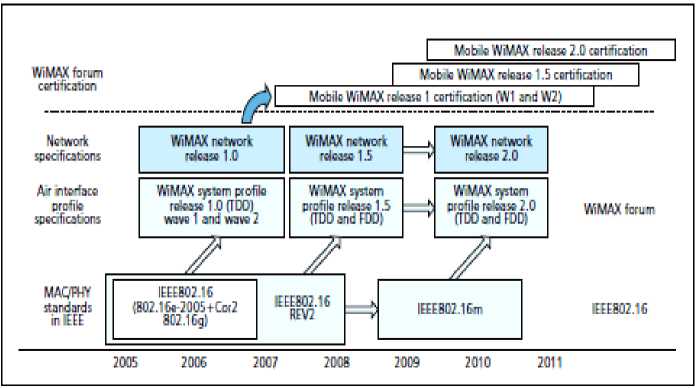
Figure 1. Mobile WiMAX technology and network evolution roadmap [5]
The WiMAX NRM distinguishes between the network access providers (NAPs) and network service providers (NSPs). The NAP defines the business entity of the network that provides WiMAX radio access infrastructure, whereas the NSP is the
business entity that provides to the subscribers IP connectivity and WiMAX services in agreement with some negotiated service level agreements (SLAs) with one or more NAPs [5].
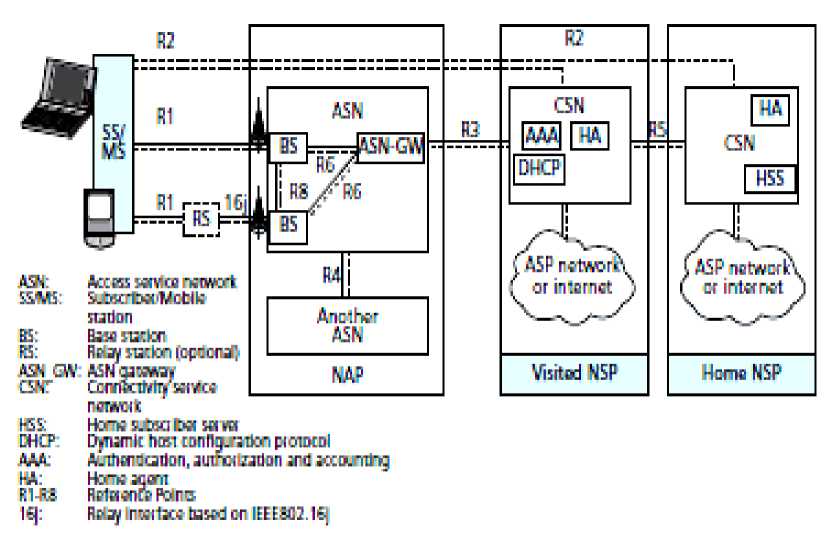
Figure 2. WiMAX NRM [5]
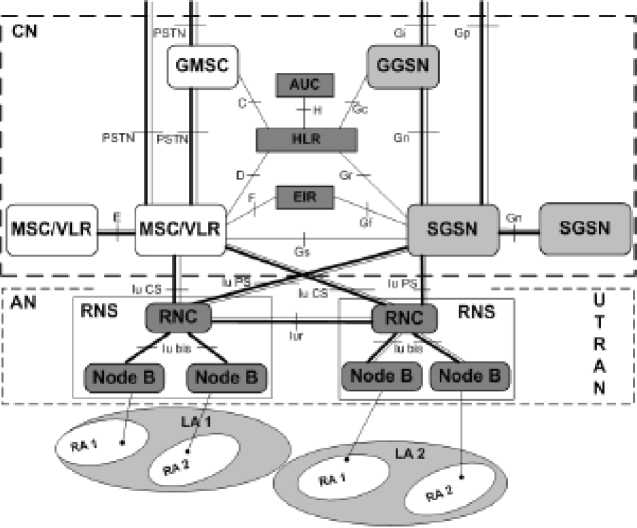
Figure 3. UMTS Network Architecture [10]
UMTS architecture is made up of three main parts and they are: the air interface, the core network (CN) and the UTRAN (UMTS Terrestrial Radio Access Network). An architectural concept of UMTS network with major network nodes and their interfaces can be seen in Figure 3. It is not the latest network figure but it does provide enough information to show that UMTS is built on existing network infrastructure.
The concept is based on two major logical parts: the Core Network (CN) and the Access Network (AN). The Core Network comprises of three major domains:
-
• Circuit-switched domain which consists of the normal GSM components: Gateway Mobile Switching Centre and Mobile Switching Centre with Visitors Location Register
-
• Common domain (Register and Service Domain) which is made up of the Authentication Centre, Home Location and Equipment Identity Register.
-
• Packet-switched domain based on GPRS, Gateway GPRS Support Node (GGSN) and Serving GPRS Support Node (SGSN).
The Core Network provides connection management, session management and mobility management functions.
The Access Network logical part consists of the Radio Network Controller (RNC) which can be considered an equivalent of the Base Station Controller (BSC) in GSM and the Node Bs which are basically the radio transceiver stations, the equivalent of the GSM base-stations. The RNCs and Node Bs are collectively known as the UTRAN, similar to Base System Subsystem (BSS).
The UTRAN functions include: radio resource management, admission control, congestion control, code allocation, power control, macro-diversity, and handover control. The interface between the access network and core network is lu and in effect two interfaces lu (PS Packet Switched) and lu (CS Circuit Switched).The packet-switched part of the CN handles access to the external IP networks for the UMTS end-users with the GGSN as the IP gateway.
Below is a brief description of some of the functionalities of the elements of the architecture and interfaces [11]:
-
• Node B (3G Base-station)
The Node B is responsible for the transmission/reception and conversion of data on the Uu interface (not shown in the figure) to the mobile. It handles rate adaptation, modulation, error correction and spreading on the air interface.
-
• RNCThe RNC is an ATM switch able to multiplex/demultiplex circuit data and user packet together. Several RNCs are connected together through the lur interface handling issues of radio resources. Each RNC controls a number of Node
Bs and this unit is collectively known as an RNS (Radio Network System).
Network components that are based on GPRS:
-
• SGSN
SGSN functions include attach/detach, sessions set up and QoS path establishment for the sessions. It also routes packets to the correct RNC and produces charging information.
-
• GGSN
As stated earlier, the GGSN is the IP gateway and border router, allocating IP addresses for services. It also produces charging records.
Components adopted from GSM and modified for UMTS:
-
• MSC
The MSC/VLR (Mobile Switching Centre/Visitor Location Register) is responsible for the connection-oriented circuit switching tasks, some security functions and Call Detail Record (CDR) generation for the purpose of billing.
-
• HLR
HLR (Home Location Register) handles data base with users’ information and services they are subscribed to.
-
• GMSC
The Gateway MSC handles the incoming and outgoing connections to the external networks for the circuit-switched traffic.
From the study of UMTS-WLAN interworking solutions, two interworking architecture approaches exist: loose couple and tight couple [12] and [13].
This scheme integrates two networks at the radio access network- core network level, making the two different access technologies to work in unity with a single core network. Considering the UMTS and mobile WiMAX networks, in tight couple mode, the data streams of WiMAX must traverse the RNC and the core network of UMTS. This means that each of these networks will have to modify their interfaces, protocols, and services in order to meet the interworking requirements. This mode reduces latency in handover and ensures seamless handover [1,14]. Figure 4 shows the two interworking modes of WiMAX and UMTS.
The loose couple interworking scheme offers a shared or joint interface for information exchanges between the two networks. From figure 4, WiMAX uses the AAA (Authentication, Authorization, Accounting) server of UMTS network, and unlike the tight couple, data streams do not traverse the UMTS
core network. This mode guarantees WiMAX network independence but has high latency during handover [1,14]. This makes it unsuitable for realtime services following researches of handover between WLAN and UMTS [15].
Different interworking levels define different operational capabilities. These levels are suitable for
both interworking modes described above. Based on table 3 of TR 22.934, table 1 shows the interworking scenarios of WiMAX and UMTS networks taking the six interconnection levels between WLAN and UMTS into consideration [15]. The interworking is not limited to WLAN and UMTS but includes the internetworking of other IP based wireless access technologies with UMTS [14].
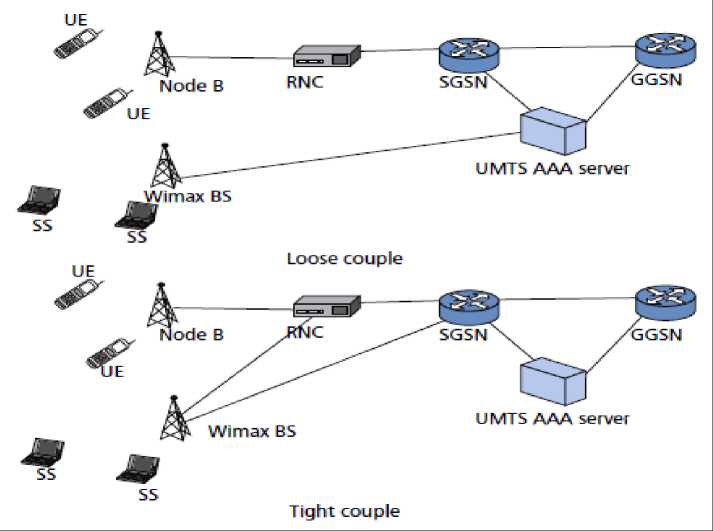
Figure 4. Loose couple and tight couple of interworking [14]
Table 1. WiMAX‐UMTS interworking scenarios (based on Table 3 of TR 22.934)
|
Levels |
Name |
Common billing and common customer cate |
SGPP-Based access control and access charging |
Access to 3GPP PS services whhout continuity |
Accessto 3GPP PS Servlceswlth continuity |
Access to 3GPP PS seamless services |
Accessto 3GPPCS based services |
|
1 |
Common billing and common customer care |
* | |||||
|
2 |
3GPP system- based access control and access charging |
* |
* | ||||
|
3 |
Access to 3GPP IMS-based services |
* |
* |
* | |||
|
4 |
Setvice continuity |
* |
* |
* |
* | ||
|
5 |
Seamless services |
* |
* |
* |
* |
* | |
|
6 |
Access to 3GPP CS services |
* |
* |
* |
* |
• |
* |
The first three levels were included in Release 6 of 3GPP and the last two will be developed in future releases. The first level has no impact on either UMTS or WiMAX architecture and includes common billing for both access services and same customer care. The second level includes the UMTS access procedures usage for WiMAX user within the UMTS domain.
The third level extends the IMS (IP Multimedia Subsystem) to the WiMAX but lacks continuity in services provided, so the user must re-establish the session in the new access network. This level allows the operator to extend packet-switched services of UMTS to the WiMAX network. The fourth level introduces service continuity but the handover process may not be seamless. The fifth scenario introduces seamless continuity and the sixth access to UMTS connection-switched based services [14].
For mobility between UMTS and mobile WiMAX access networks, several architectural solutions have been proposed.
Here, the interworking proposal is based on the fact that the user terminal can only connect to one access network at any time. The handover suggested is hard handover between UMTS and WiMAX. Figure 5 shows the interworking architecture based on interworking architecture models of 3GPP standards [16].
The mobility in the WiMAX network is managed by the WiMAX (HA) Home Agent which is located between the ASN-GW and the WAG (WiMAX Access Gateway). The WAG routes the packets via the PDG (Packet Data Gateway), performs accounting and filtering out of packets. The PDG performs the FA (Foreign Agent) functions and routes packets received from/sent to the PDN (Packet Data Network) to/from the MS. The FA located in ASN-GW is considered as the local FA in the architecture. Through the WAG, UMTS and WiMAX networks are connected. The WiMAX AN (Access Network) connects to the AAA server of 3GPP for WiMAX authentication process. Within the UMTS network, mobility is managed by its own mobility handover mechanism. Here, the GGSN performs the functions of an FA. For the handover between these networks to take place, the HA is placed in the PDN and manages FAs of both networks [1].
MIP based approaches for mobility management is a good solution for mobility in mobile WiMAX networks generally, but it has several disadvantages.
-
• Being a pure network layer oriented solution; it is not able to solve any link layer handover problems.
-
• Triangular routing can result to extended delays.
-
• Not best solution for vertical handovers due to differences in mobility management techniques of the different networking environment; UMTS CN does not use MIP [17].

Figure 5. UMTS-WIMAX Mobile IP based interworking architecture [1]

The 3GPP specified the IMS in its Release 5 and later releases in order to provide various kinds of multimedia services. IMS is defined as the component within the UMTS core network that provides support for multimedia services such as video or voice based on packet switching with quality of service and the AAA provision. IMS uses SIP (Session Initiation Protocol) as its base protocol for signaling and session management. It also employs COPS and Diameter.
Interworking UMTS and WiMAX at the service layer requires interworking between IMS functionality. WiMAX is used primarily for the transportation of IP packets. Therefore, the UMTS-WIMAX architecture should be built on the IP protocol [14]. Figure 6 shows the interworking architecture. The left side of the interworking reference architecture shows a general view of the IMS architecture and the signaling and data interfaces between both networks. The signaling network is composed of a set of call session control function nodes (CSCFs). These are the signaling proxies whose function is to establish, modify, and release media sessions with guaranteed QoS, AAA and charging (AAAC) support. Proxy CSCF (P-CSCF) is the user agent in SIP. Serving CSFC (S-CSCF) is the main functional entity in IMS that takes charge of session management and registration of the user. Interrogating CSCF (I-CSCF) carries out tasks of proxy and topology that hides between operators. These proxies are defined as functional entities so that they can be easily split or combined in the implementation of IMS [14].
The proposed integration of WiMAX within the 3GPP evolved packet core (EPC) will afford the network operators the opportunity of re-using the existing back-end systems. This helps to speed up network deployment and allows for accessindependent services and seamless inter-technology handover. The integration also will support legacy 3GPP radio accesses (GSM, UMTS, EDGE, and HSPA) and provide seamless mobility across all of them. The evolved packet network architecture was standardized by 3GPP and the specifications given in Release 8 as can be found in [18,19]. Figure 7 shows the architecture for the integration. The interworking architecture shows the logical interfaces connecting mobile WiMAX and the 3GPP EPC which largely based on Release 8 specifications but has some enhancements to support handover between the two networks [2]. There are four main logical interface deployed in this architecture:
-
• 3GPP STa: This is used for AAA-based authentication of UE and to enforce the preconfigured QoS. It is equivalent to WiMAX R3-AAA interface.
-
• 3GPP Gxa is used to enforce charging rules and dynamic QoS. An equivalent of WiMAX R3-PCC.
-
• 3GPP S2a is used for layer 3 mobility and for the establishment of bearer toward the core network. It is equivalent to WiMAX R3-MIP
-
• 3GPP S14: This is used for inter-technology network discovery and selection, to facilitate the optimized WiMAX-3GPP handover.
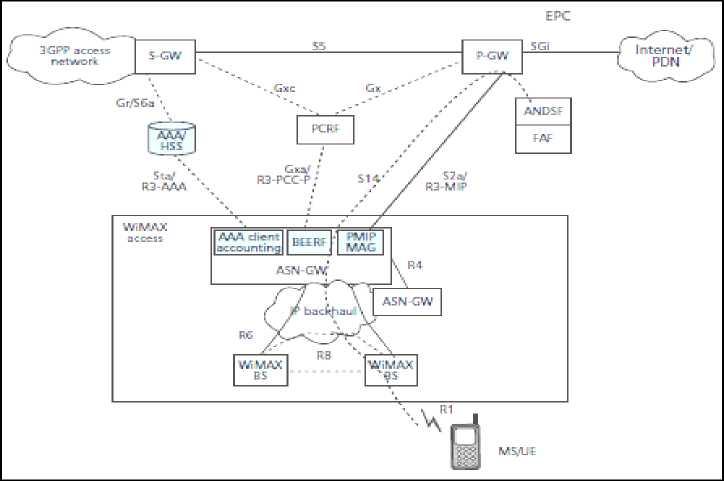
Figure 7. Architecture for integrating mobile WiMAX within the 3GPP EPC [2]
Due to the differences in the bandwidth of the networks, provision of constant level of service for all users is not possible. The purpose of QoS guarantee is to achieve seamless mobility across the WiMAX and UMTS radio access technologies. To maintain a specific level of QoS consistently, QoS mappings and semantics on the two networks as well as allocation of resources have to be put into consideration [2].
UMTS defines four classes of QoS services which are based on the different requirements of the applications: conversational, interactive, streaming, and background. WiMAX also defines four classes of QoS: UGS (Unsolicited grant service), rt-PS (realtime polling service), nrt-PS (non-real-time polling service), and BE (Best effort). There is a fifth, (ert-PS) extended real-time polling service [14].
The conversational and streaming services of UMTS can be mapped to the UGS and rt-PS services in WiMAX. The nrt-PS and BE services in WiMAX can be mapped onto the interactive service in UMTS. But background service in UMTS has same requirement as the WiMAX BE service [14].
Seamless mobility refers to ubiquitous coverage; ability to obtain radio access regardless of network; automatic access selection which is dependent on user need; service provider relationship in terms of single user interface, billing, customer care; and Personalized service delivery and auto identification. The list goes on, but in a nutshell, the world of seamless mobility portrays easy, universal, uninterrupted access to information, entertainment, monitoring, communication and control. This is achieved by employing different networks to form a network of networks affording the users the opportunity to move securely and seamlessly across the different network infrastructures while using the best radio resources available.
In heterogeneous networks, the challenges of achieving seamless mobility which include support of interoperability between different vendor equipment, scalability, QoS guarantees during handover (low handover latency, packet loss etc) and security cannot be over-emphasized.
It is therefore important that there is seamless mobility experience provided for the users. From the perspective of the mobile user, the experience hides the heterogeneity of the system, and provides the best service to the user in a transparent fashion. From the network operator’s perspective, the seamless experience is seen as improvement in the key performance metrics such as drop rates, availability and throughput [2].
To manage effectively the mobility of any system, three classes of procedures are defined for the system: generic procedures for registration;
location management for location update, session selection/reselection and session establishment; and handover management (DES). Concentrating on the handover management, several issues are to be considered before an integrated UMTS-WiMAX can provide a seamless mobility experience.
When a mobile terminal connected to either UMTS or WiMAX network discovers (with or without assistance from the network) a different network cell nearby, depending on the traffic and environment conditions, a handover process can occur.
The decision to initiate handover can be taken by the UE or the network. It is proposed that if the network takes the decision, it is more beneficial as it can redirect the UE to another radio frequency or site where there is enough capacity to handle the UE’s on-going communications. The network also has the capability of coordinating the mobility of all UEs in such a way that the general traffic is distributed across all radio resources in an even manner. This help to reduce congestion and increase throughput. The network however may lack such parameters as user preferences, the exact type of service that is active on the UE to effect a handover decision [2].
The handover decision between 3GPP and mobile WiMAX as specified by the Release 8 specifications of the 3GPP is made by UE for the following reasons: the decision can be taken based on its current radio measurements and preconfigured user preferences, it does not need to send any intertechnology radio measurement to the network, and there is a minimum impact on the integrated network because there is no need for either of the networks to keep a log of the radio resources available [2].
To minimize handover interruption and maintain a consistent QoS level are the major requirements for achieving seamless integration of 3GPP and WiMAX access technologies.
The handover solution that will achieve a seamless mobility between the two networks will depend on a single-radio solution where the mobile device transmits and receives only on one radio access (either 3GPP or mobile WiMAX) at a particular time. This solution eliminates the issues associated with radio frequency (RF) coexistence and improves handover performance, however, the mobile device and the network requires more intelligence [2].
WiMAX network was deployed after UMTS has benefits of a wide area coverage, full mobility, roaming, integral security, and full integration with charging systems. The data rates are however low
and cannot satisfy data intensive applications adequately and at low cost. With the advent of mobile WiMAX, a mobile broadband wireless access solution and based on all-IP based OFDMA technology, an UMTS-WiMAX interworking approach can combine the merits of both technologies while eliminating their stand-alone defects.
-
[1] N.-V. Quoc-Thinh, et al., "An Architecture for UMTS-WIMAX Interworking," in Broadband Convergence Networks, 2006. BcN 2006. The 1st International Workshop on, 2006, pp. 1-10.
-
[2] P. Taaghol, et al., "Seamless Integration of mobile WiMAX in 3GPP Networks," Communications Magazine, IEEE, vol. 46, pp. 74-85, 2008.
-
[3] L. Seunghyun, et al., "Inter-RAT Handover Technique from WCDMA Network to CDMA2000 Network," in Mobile Technology, Applications and Systems, 2005 2nd International Conference on, 2005, pp. 1-5.
-
[4] B. Yana, et al., "Seamless Mobility Using Mobile IPv6," in Mobile Technology, Applications and Systems, 2005 2nd International Conference on, 2005, pp. 1-8.
-
[5] K. Etemad, "Overview of mobile WiMAX Technology and Evolution," Communications Magazine, IEEE, vol. 46, pp. 31-40, 2008.
-
[6] W. Fan, et al., "Mobile WiMAX Systems: Performance and Evolution," Communications Magazine, IEEE, vol. 46, pp. 41-49, 2008.
-
[7] L. Nuaymi, WiMAX: Technology for Broadband Wireless Access, 1st ed. West Sussex: John Wiley & Sons Ltd, 2007.
-
[8] WiMAX Forum, "Mobile System Profile Release 1.0. Approved Specification," in Rev. 1.4.0, May 2007.
-
[9] T. Jiang, et al. (2007) Multicast Broadcast Services Support in OFDMA-Based WiMAX Systems. IEEE Communications Magazine. pp. 78-86, 2007.
-
[10] T. Ivankovic, "Support of Multimedia Broadcast/Multicast Service in UMTS Networks," in Telecommunications, 2005. ConTEL 2005. Proceedings of the 8th International Conference on, 2005, pp. 91-98.
-
[11] D. Wisely, IP for 4G, 1st ed. West Sussex: John Wiley & Sons Ltd, 2009.
-
[12] T. Shiao-Li and L. Chia-Ching, "Design and Evaluation of UMTS-WLAN Interworking Strategies," in Vehicular Technology Conference, 2002. Proceedings. VTC 2002-Fall. 2002 IEEE 56th, 2002, pp. 777-781 vol.2.
-
[13] M. Jaseemuddin, "An Architecture for Integrating UMTS and 802.11 WLAN Networks," in Computers and Communication,
2003. (ISCC 2003). Proceedings. Eighth IEEE International Symposium on, 2003, pp. 716-723 vol.2.
-
[14] X. Fangmin, et al., "Interworking of Wimax and 3GPP Networks Based on IMS [IP Multimedia Systems (IMS) Infrastructure and Services]," Communications Magazine, IEEE, vol. 45, pp. 144-150, 2007.
-
[15] S. Jee-young, et al., "Hybrid Coupling Scheme for UMTS and Wireless LAN Interworking," in Vehicular Technology Conference, 2003. VTC 2003-Fall. 2003 IEEE 58th, 2003, pp. 22472251 Vol.4.
-
[16] 3GPP, "3GPP TS 23.234, "3GPP System to Wireless Local Area Network (WLAN) Interworking; System Description," v6.2.0, Sept 2004.," ed.
-
[17] K. S. Munasinghe and A. Jamalipour, "An Architecture for Mobility Management in Interworked 3G Cellular and WiMAX Networks," in Wireless Telecommunications Symposium, 2008. WTS 2008, 2008, pp. 291297.
-
[18] 3GPP TS 23.401, " General Packet Radio Service (GPRS) Enhancements for Evolved Universal Terrestrial Radio Access Network (E-UTRAN) Access (Release 8)."
-
[19] 3GPP TS 23.402, "Architecture Enhancements for Non-3GPP Accesses (Release 8)".
Teknologi Elektro
1 3 1
Vol. 9 No.2 Juli - Desember 2010
Discussion and feedback